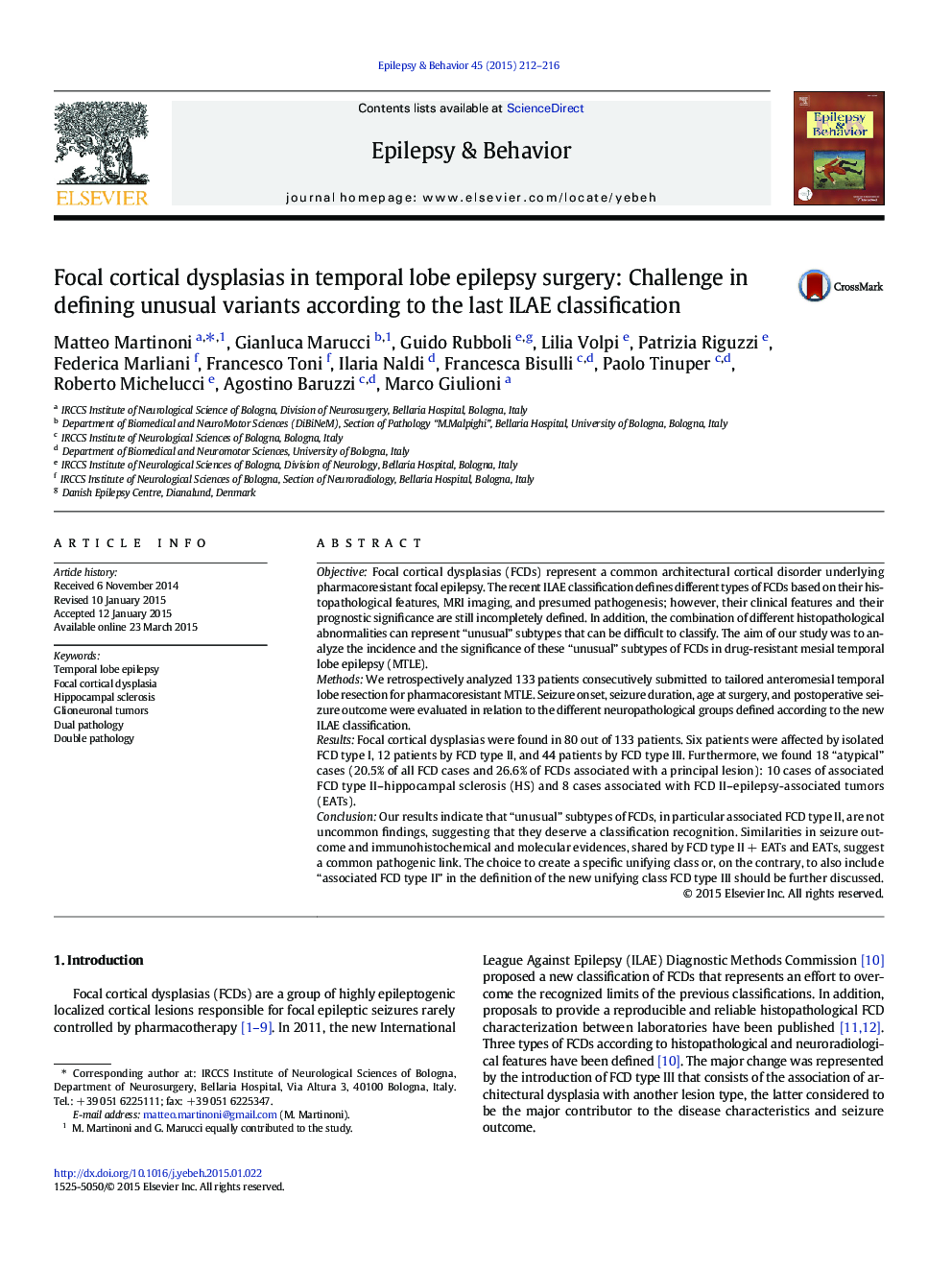| Article ID | Journal | Published Year | Pages | File Type |
|---|---|---|---|---|
| 6011289 | Epilepsy & Behavior | 2015 | 5 Pages |
Abstract
Our results indicate that “unusual” subtypes of FCDs, in particular associated FCD type II, are not uncommon findings, suggesting that they deserve a classification recognition. Similarities in seizure outcome and immunohistochemical and molecular evidences, shared by FCD type IIÂ +Â EATs and EATs, suggest a common pathogenic link. The choice to create a specific unifying class or, on the contrary, to also include “associated FCD type II” in the definition of the new unifying class FCD type III should be further discussed.
Keywords
Related Topics
Life Sciences
Neuroscience
Behavioral Neuroscience
Authors
Matteo Martinoni, Gianluca Marucci, Guido Rubboli, Lilia Volpi, Patrizia Riguzzi, Federica Marliani, Francesco Toni, Ilaria Naldi, Francesca Bisulli, Paolo Tinuper, Roberto Michelucci, Agostino Baruzzi, Marco Giulioni,
